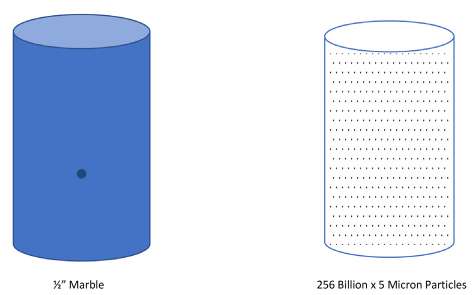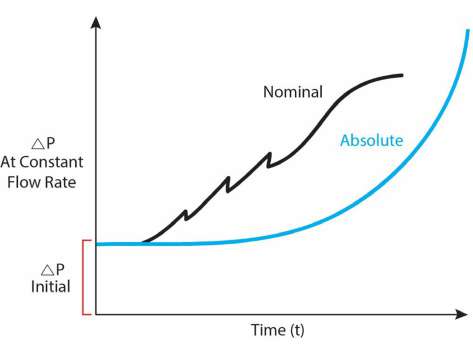Filtration is present in all walks of life. It is so commonplace that it is not often thought about, but it is important that the basics of filtration are understood, so that the many benefits that it provides can be realised.
By the time one gets up in the morning to go to work, filtration has already been experienced at many different levels. The nose has filtered the that air you breathe, to capture and trap particles before they can access your lungs. Air in the lungs is also filtered to remove dust and germs that may have entered them during the breathing process. The heart and kidneys also act as filters to help keep the body healthy, working to remove toxins that are filtered from the body. Water is filtered, coffee is filtered, various juices go through a filtration process and milk is filtered to extend its shelf life. Even the ink in magazines and newspapers is filtered to maintain a specific colour and grind specification. Filtration is widely used in the energy industry to provide a liquid or gas that meets a level of cleanliness that is required for a specific process. It may be combined with other unit operations to process various feed streams. Filtration is the process in which solid particles in a liquid or gaseous fluid are removed using a filter medium that permits the fluid to pass through, but retains the solid particles. Either the clarified fluid or the solid particles removed from the fluid may be the desired product.
Maintaining innovative filtration technologies in the energy industry is of paramount importance in all areas of the sector. Utilising effective filtration technologies can reduce contamination in processing operations which is critical for efficient effluent quality requirements. The importance of filtration cannot be overstated. Contamination control is essential for process control. Stable operation of highly integrated refining and petrochemical processing plants relies on the ability of the various systems to absorb process instabilities that are either episodic or continual. Trace amounts of contamination cause operating challenges including carryover, solvent loss, exchanger and tower fouling, tower foaming, corrosion, and downtime. Persistence of trace contamination has been accepted as inherent to chemical process operations. However, filtration technologies exist to remove such contaminants and to prevent the contamination from building up or propagating – the application of such technology allows the creation of a ‘balanced system’. Such balanced systems maximise throughput, minimise OPEX, and minimise environmental impact. Some typical applications of filtration technologies for process optimisation are:
 Figure 1. Weight percent removal illustration –
nominal filtration. Both cylinders contain the same
weight of contaminants (12.7 mg/l). The cylinder on
the left has 0.5 in. marble. The one on the right has
256 billion x 5 μm particles.
Figure 1. Weight percent removal illustration –
nominal filtration. Both cylinders contain the same
weight of contaminants (12.7 mg/l). The cylinder on
the left has 0.5 in. marble. The one on the right has
256 billion x 5 μm particles.
Filtration is divided into two main rating systems: nominal and absolute filtration. The difference between the two systems is a critical
factor when a filter choice is made, as the performance between the two can provide dramatically different results. A nominal filtration
rating defined by the National Fluid Power Association (NFPA) is an arbitrary micron value assigned by the filter manufacturer based upon
the removal of some percentage of particles based on a given size or larger. It is a weight percentage removal and it is not well-defined
or reproducible. Results can vary and performance is not definitive or indicative of the proposed micron. An absolute rating system will
provide reproducible results to ensure that the process has the level of contamination removal that is required for the specific
application. The NFPA defines an absolute rating as the diameter of the largest hard spherical particle that will pass through a filter
media under specified test conditions. It is an indication of the largest opening in the filter element. Utilising the fixed
pore technology of the filter media ensures a reproducible effluent quality to the defined micron requirements. An important rating
system for absolute filtration utilises particle counting to provide the performance of the filter at the designated micron. This system
utilises beta values, which is counting the influent particles passed through the filter and counting the downstream particles. The beta
values are determined using the Oklahoma State University ‘OSU F-2 Filter Performance Test’. The performance removal of a given particle
size can be obtained by utilising the following calculation:
% Removal efficiency = Beta-1/Beta x 100
Example: Beta 5000-1 x 100 = 4999 = 0.9998 x 100 = 99.98% efficiency Beta 5000 5000
Figure 1 illustrates weight percent removal (nominal filtration). Both cylinders contain the same weight of contaminants (12.7 mg/l). A nominally rated 5 µm filter would remove the 0.5 in. marble (left cylinder in Figure 1) but do very little to remove the actual 5 µm particles. This nominally rated filter could be assigned any efficiency (i.e. 95% at 5 µm) by the manufacturer for weight percentage removal but is very ineffective to remove the definitive 5 µm particles. Absolute rated filters provide a repeatable effluent quality based on actual particle size count and have efficiencies in the 99 - 99.98% removal range in whatever micron level is required by the customer. PS Filter’s original equipment manufacturer (OEM) absolute rated filters will always perform to the efficiency and micron chosen and provide excellent dirt capacity and performance when compared to nominal filters. This is attained by a fixed pore construction that will not unload captured contaminants under operational differential pressure increase, as well as by the use of the company’s proprietary amount of effective filtration area to provide the high solids capacity.
 Figure 2. Typical filter response to increasing
differential pressure.
Figure 2. Typical filter response to increasing
differential pressure.
Figure 2 shows the response difference between nominal and absolute rated filters and the unloading seen when the differential pressure (DP) increases across nominal filters. The problem with this response is that contaminants can unload downstream, and without careful monitoring the media itself can migrate and cause numerous costly downstream issues from well bore plugging in water flood operations to mechanical equipment and process problems in production operations. Nominal filters have medias which can move under increasing DP as the pore structure is not a fixed-pore construction and is subject to deformation, so previously captured particles are released downstream. This defeats many of the advantages of filtering in the first place. Field samples where the downstream effluent is dirtier than the influent due to unloading of previously captured particles can be observed. This effect can be seen in fluctuating DP readings and cycles of increasing DP followed by a sharp decrease (saw type curve) when the media moves and unloads contaminants. This can lead to the false impression of a deceptively long filter life and the assumption that the filter is working effectively. Absolute rated filters are manufactured differently to provide consistent performance over the actual life of the filter with a low DP that increases gradually over time until the filter is completely plugged and the change-out DP is reached. Because of the fixed-pore construction, the pore size is not subject to change over increasing DP and the media integrity is also maintained. This guarantees a consistent effluent quality at the designated micron chosen and means that the efficiency is not in jeopardy during operation. PS Filter’s OEM proprietary pleated design provides higher dirt capacity than nominal type filters. One of the most important filter choice criteria should be efficiency advantages in order to meet the lowest cost per amount of contaminant removal at a designated micron-level. The installation of a proper filtration solution can extend the lifetime of equipment and ensure that operators are not caught off guard by unexpected downtimes. Contamination negatively impacts various industries and operations. This can result in unplanned costs, reduced production time and increased equipment maintenance.
 Figure 3. Innovative pleated medias can provide
extended filtration area.
Figure 3. Innovative pleated medias can provide
extended filtration area.
The obvious reason for filtration in the first place is to ensure a level of effluent quality that is guaranteed to maintain an efficient
operational process. Depending on the application, there can be varying levels of micron size requirements and once this has been
determined, it is imperative to choose a filter that can meet the chosen requirements cost-effectively and be operationally feasible. A
reliable and predictable outcome is required each time to ensure the chosen filter performs to the client expectations without fail. Over
the years there have been many innovative technical advances to filtration, but there is one constant that needs to be addressed and that is
a consistent, repeatable effluent quality with no compromises that could cause significant process damage and loss of revenue. Filtration
can be confusing, but it does not have to be when the time is taken to evaluate the process to ensure a positive outcome and provide the
best product for the application. The optimal choice ultimately comes down to the technology that best meets the performance and operating
cost needs of the application. Careful consideration when choosing a liquid filtration system will offer numerous potential benefits. A wise
filter selection can minimise process downtime, reduce, or eliminate waste disposal costs, limit worker exposure to the process liquid,
reduce maintenance time and expense, and improve product quality. As a result, it is important to review all the available filtration
options and identify potential areas where adding or upgrading filtration can provide cost savings.
Request Information

As an Energy Industry Professional Neil has a well-rounded knowledge of what it takes to effectively produce oil and gas to maximize the benefit. For the past 34 years working in the Oil-Patch, Safety and Environmental Protection has always been important to Neil and his associates. Neil feels Energy Companies and the Industry have come a long way to do things better and safer while continuing to contribute to a Global Economy and continues to look at the future with a positive attitude.